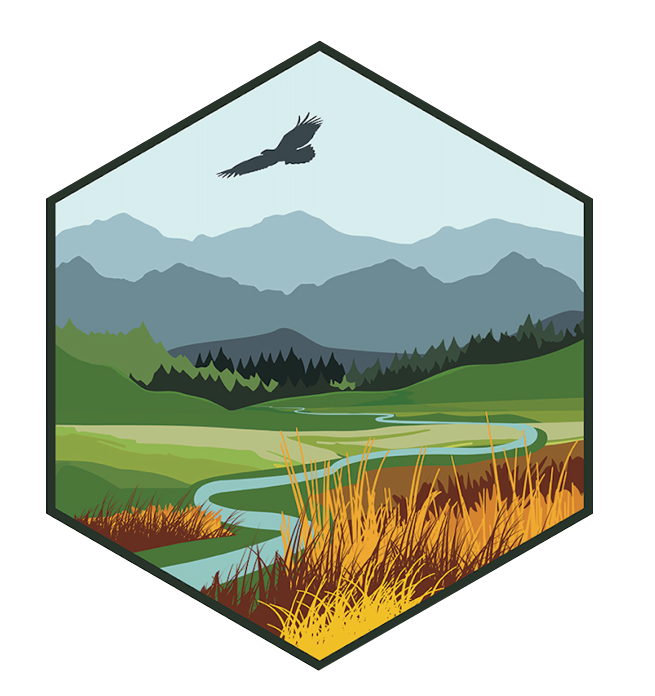Project Overview Infectious disease poses a growing threat to wildlife and human health, and managing disease threats is complicated by climatic changes that can change levels of disease risk. Researchers supported by this North Central CASC project will co-develop a method to rank wildlife disease threats under climate change, providing critical useable information to Montana’s wildlife managers. This information will be used to proactively manage infectious wildlife diseases and will be integrated into management planning documents, like the State Wildlife Action Plan. Project Summary Infectious disease is a pressing concern for wildlife conservation and human health. Natural resource managers face a wide range of potential disease threats, but often have little information about effective management strategies or about various levels of potential risk. Climate change further complicates this challenge by rapidly shifting disease risk and introducing new threats. To prioritize limited resources, managers need clear, accessible information on how climate impacts wildlife diseases. Stakeholders in the North Central region (including partners at Montana Fish, Wildlife & Parks) have communicated this need for a better understanding of climate change impacts on wildlife disease and have requested scientific support to help compile and integrate this information into key management documents like State Wildlife Action Plans. This project seeks to co-develop an approach to rank wildlife disease threats under climate change and apply this approach to identify high-priority threats for imperiled wildlife and aquatic species in Montana. The approach will combine existing scientific research with strong user engagement. A major outcome of the project will be integrating climate and disease information into Montana’s revised State Wildlife Action Plan, enabling the state to receive funding for and take on-the-ground actions targeting infectious disease impacts on wildlife. Understanding future disease threats under climate change is critical for implementing proactive management strategies that effectively limit disease spread. This project will also generate broadly relevant information on the management of novel disease threats under a changing climate, helping to better integrate disease management into climate adaptation science.
Birds
Natural resource managers consistently identify invasive species as one of the biggest challenges for ecological adaptation to climate change. Yet climate change is often not considered during their management decision making. Given the many ways that invasive species and climate change will interact, such as changing fire regimes and facilitating the migration of high priority species, it is more critical than ever to integrate climate adaptation science and natural resource management. The coupling of climate adaptation and invasive species management remains limited by a lack of information, personnel, and funding. Those working on ecological adaptation to climate change have reported that information is not available or is not presented in a way that informs invasive species management. This project will expand the successful model of the Northeast Regional Invasive Species and Climate Change Management Network to the North Central region of the U.S. This effort will integrate the research and management of invasive species, climate change, and fire under one umbrella. Stakeholders in the North Central region have identified invasive species, woody encroachment, wildfire, and habitat and ecological transformation as key management issues which this project will address. A primary activity will be to host two Science Integration Workshops to pair management needs with research directions. From these workshops, strategic scientific products will be derived that include synthesis of existing information in a workshop report, summaries on management challenges adapted for the region, blog posts for managers, and collaboration with land managers to access and utilize existing climate and invasive species information and tools. The research team will work together with managers to understand key management needs surrounding invasive plant species in a changing climate.
The Prairie Pothole Region is recognized as one of the most critical breeding habitats for waterfowl in North America and is used by an estimated 50–80 % of the continent’s breeding duck population. The ongoing acquisition program of the U.S. Fish and Wildlife Service National Wildlife Refuge System has conserved approximately 1.3 million hectares of critical breeding-waterfowl habitat. This current conservation approach assumes that past distributions of waterfowl habitat and populations are relatively representative of future distributions, however, due to changes in the area’s hydrology this may not be the case. Understanding how climate change may impact these wetland and grassland ecosystems is key for management agencies to set priorities for future conservation actions. The goal of this project is to co-produce novel information for land-management agencies to better plan for future impacts of climate change on the wetland habitat for breeding waterfowl pairs in the U.S. Prairie Pothole Region. The researchers will use a mechanistic hydrology model with U.S. Fish and Wildlife Service datasets that span multiple decades and predictive breeding waterfowl pair statistical models to simulate wetland-waterfowl responses under different climate futures. By working directly with scientists and decision makers at the U.S. Fish & Wildlife Service, the team will ensure delivery of actionable science that can readily inform the agency about potential climate-driven impacts to breeding waterfowl pairs in currently monitored wetlands. This project will generate new, more robust predictions of the future status of the wetland ecosystem and waterfowl habitat of the Prairie Pothole Region.
Climate affects both the demographics of the Greater sage-grouse bird and the condition and long-term viability of their habitats, including sage-steppe communities. This project builds on collaboration among federal land managers, state wildlife biologists, scientists, and other organizations to create a long-term framework for implementing adaptive management for the sage-grouse. The study examined factors that might be limiting grouse numbers and will investigate components of weather patterns in relation to projected climate change models. Precipitation and temperature, as well as variables such as evaporation and soil moisture, will be considered. Overall, the project focused on (1) providing workshops to foster collaboration and interpretation of climate information, (2) developing a sage-steppe habitat map, and (3) suggesting recommendations for an adaptive management framework.
The Prairie Pothole Region spans parts of North and South Dakota, Minnesota, Montana, Iowa and south-central Canada and contains millions of wetlands that provide habitat for breeding and migrating birds. Because it is the continent’s most important breeding area for waterfowl, conservation and management largely focuses on protecting habitat for nesting ducks. However, other wetland-dependent birds also rely on this region, and it is important to understand the degree to which habitat conserved for ducks provides habitat for other species, and how the quality of this habitat will be affected by climate change. Project researchers tested whether waterfowl are effective representatives, or surrogates, for other wetland-dependent birds by predicting how climate change will affect habitat suitability for waterfowl and other species. The team also considered how climate change is likely to affect land-use patterns and agricultural conversion risk, and used these predictions to identify areas of the landscape where both waterfowl and other species were expected to have suitable habitat in the future. This research was intended to help managers efficiently direct their resources towards conserving areas that will provide habitat to a broad suite of species.
This landcover raster was generated through a Random Forest predictive model developed in R using a combination of image-derived and ancillary variables, and field-derived training points grouped into 18 classes. Overall accuracy, generated internally through bootstrapping, was 75.5%. A series of post-modeling steps brought the final number of land cover classes to 28.
This landcover raster was generated through a Random Forest predictive model developed in R using a combination of image-derived and ancillary variables, and field-derived training points grouped into 18 classes. Overall accuracy, generated internally through bootstrapping, was 72.7%. A series of post-modeling steps brought the final number of land cover classes to 28.
This study had two objectives: first, to generate a landcover map for the Charles M. Russell Wildlife Refuge (CMR) emphasizing the distribution of land cover types in relation to greater sage grouse ( Centrocercus urophasianus) habitat needs, and second, to provide data that would allow a determination of whether results were better with SPOT imagery or Landsat 8 imagery. SPOT imagery is provided at a 10m pixel resolution, while Landsat 8 is at 30m. Results from this classification will allow managers to determine which resolution provides the accuracy needed for habitat planning and management.
Training points collected in the field between 2012 and 2013 were grouped into 18 classes: Forested Burn (66), Foothill Woodland Steppe Transition (73), Greasewood Flat (73), Greasewood Steppe (239), Greasewood Sage Steppe (277), Great Plains Badlands (166), Great Plains Riparian (255), Low Density Sage Steppe (776), Medium Density Sage Steppe (783), Mixed Grass Prairie (555), Mixed Grass Prairie Burned (278), Ponderosa Pine Woodland and Shrubland (512), Riparian Floodplain (223), Semi-Desert Grassland (103), Sparsely Vegetated Mixed Shrub (252), Silver Sage Flat (70) , Silver Sage Steppe (64), and Water (246). When insufficient field data were available for a class, we augmented it through photointerpretation of 15 cm aerial imagery, using expert knowledge and field experience to guide us. The final dataset had 5,011 training points.
The Prairie Pothole Region (PPR) in the northern Great Plains contains millions of wetlands that provide habitat for breeding and migrating birds. Although conservation and management largely focuses on protecting habitat for nesting ducks, other wetland-dependent birds also rely on this region. Land managers want to know whether habitat conserved for ducks provides habitat for other species and how these habitats will be affected by climate change. A primary goal of this research has been to assist managers in conserving areas that will provide habitat to a broad suite of species. We considered how climate change is likely to affect land-use patterns and agricultural conversion risk. We then predicted how climate change will affect the density and distribution of wetlands under future climate conditions based on models incorporating land-use, climate models, hydrology, and distribution of wetland basins. Although the density of wetlands with water will most likely decline across the region, the distribution of wetlands probably will not shift spatially because the location of wetland basins is static. Species distribution modeling techniques projected that geographic ranges of nearly 30 species of wetland-dependent birds will decline by an average of 31% (range: 75% decline to 16% increase) as the climate warms. To test whether waterfowl are effective representatives, or surrogates, for other wetland-dependent birds, we used data from citizen science bird surveys and species life history to mathematically demonstrate how closely wetland birds associate with waterfowl. At small scales in space and time (for example, a small wetland complex on an annual basis), many waterfowl and other wetland birds species were segregated. Yet at larger scales in space and time, the scales at which habitat protection decisions are made, many species appeared to co-occur because various microhabitats were represented in the larger dynamic landscapes through 30-yr time periods.

